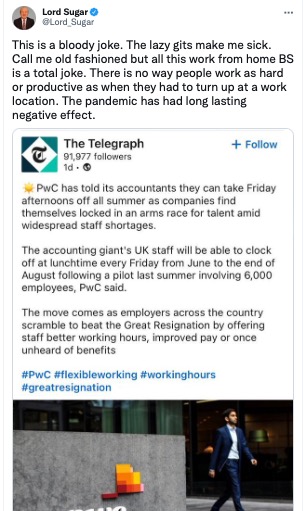Lessons from Lockdown – The Second Pivot
The Post-2021 Remote Work Pivot Point
Trickling in during the summer of 2021, the second pivot point started gaining traction.
The statistics around the number of those who want to return to the office full-time and those wanting a more hybrid way of working differs across studies. But generally:
56% of knowledge workers prefer to work from home & 39% want to return to the office *
Whatever statistics you may find:
- We know that a number of workers do not want to psychologically return to the ‘old normal’
- We know that those who had more autonomy and job control during Lockdowns had lower overall stress and anxiety levels
- Once a worker realises they can be more productive with lower levels of stress, it becomes difficult to return to a more controlling, less productive work environment.
Although the main arguments from those desiring a return to the ‘old normal’, hang on the narrative of productivity levels when working from home, there is a potential that the main driving force behind that narrative is what Apple employees in their open letter to their management describe as ‘the fear of the future of work, the fear of worker autonomy and the fear of losing control’.
The more a company insists on returning to the ‘old normal’, the more out of step they become with current and future worker ideals. Because the future of work is moving towards us faster than we realise. The past two years have given us an idea and understanding of how quickly and radically technology can shift how we work. We need to be ready for this workplace future.







